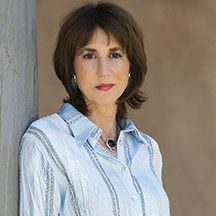INTERVIEW
Methodical Approach To Trading

Michele “Mish” Schneider, the director of trading education & research for MarketGauge, provides in-depth trader training as the market analyst, writer, and host of Mish’s Market Minute. She contributes to several online trading publications and serves as a regular contributor to MarketGauge’s free newsletters Market Outlook and MMMDaily. Mish brings passion as well as expertise as a world-class educator to the trading world.
A former member of the Coffee, Sugar and Cocoa Exchange, NYMEX, and FINEX in New York City, as well as market analyst for Continental Grain and Floor Analyst for Conti-Commodities, Mish Schneider began as a floor broker before becoming an independent trader for her own account. Noted for her technical analysis, she has advised some of the most successful traders in the world.
In 2010, Schneider was voted one of the “100 Best Damn Stock Traders on Twitter” by SocialExec.com. She coauthored MarketGauge’s Complete Swing Trading System and currently serves as a trader/partner in Halcyon Trading LP, a hedge fund. She also is a founder/partner in Wizard IP, a software development company developing and deploying state-of-the-art trading technology.
Stocks & Commodities Editor Jayanthi Gopalakrishnan and Staff Writer Bruce Faber spoke with Schneider on September 7, 2012.
Mish, how did you get started in trading?
I grew up in a typical middle-class neighborhood in Queens, New York, and I was told that I would be best as a schoolteacher because that was what women did who wanted to work back in those days. I got a degree in special education and became a teacher. Later on, I became a consultant for various school districts. Meanwhile, I had met a woman who lived in my building who worked as a coffee, sugar, cocoa analyst on the floor for Merrill Lynch. I got curious about what she did.
She took me to the floor for a visit. It was one of those “light bulb goes off in your head” moments. I was like, Wow! I was drawn to the floor, even though I knew nothing about the markets. As luck would have it, I was able to get a part-time job to learn about them. So I worked in the school system during the day and in the afternoon I would go down to Wall Street.
I still hear the noise of the trading floor in my head. As soon as I start to see the volume spike up, I hear the noise. I hear the shouting. I hear them going, “Buy! Buy!” Eventually, I got a job with a company that was doing marketing research for a commodities rag called The Public Ledger. I believe it is still in circulation today. It is more than 150 years old. It dealt mostly with the soft commodities: coffee, sugar, and cocoa. I got to interview people from the top commodity firms.
After I finished that project, I went to London. When I got back to New York, I got in touch with those people, relaying how much I would love a job working on the floor. I got offers from Merrill Lynch and Continental Commodities. The job at Merrill Lynch was as an order clerk. The one at Conti-Commodities was as a coffee sugar cocoa analyst. Needless to say, I took that position and became an analyst.
When I began on the floor, I got a quick education, eventually becoming a broker in coffee, sugar, and cocoa. Conti-Commodities blew up a couple of years later with the Hunt Brothers silver debacle. I wound up borrowing a couple of thousand dollars from a clerk I knew to start a trading account, and I went over to COMEX. I became a local and then a broker at NYMEX, and then I wound up in FINEX before finally leaving the floor 12 years later.
Was it anything like you expected it to be?
It was better. Everything that I was initially attracted to was better defined once I got down there. For example, I did not realize it at the time, but the trading floor was the last bastion of pure capitalism. To be able to go down there, pretty much poor, and go from that to borrowing money, to become highly successful was the ultimate free market environment.